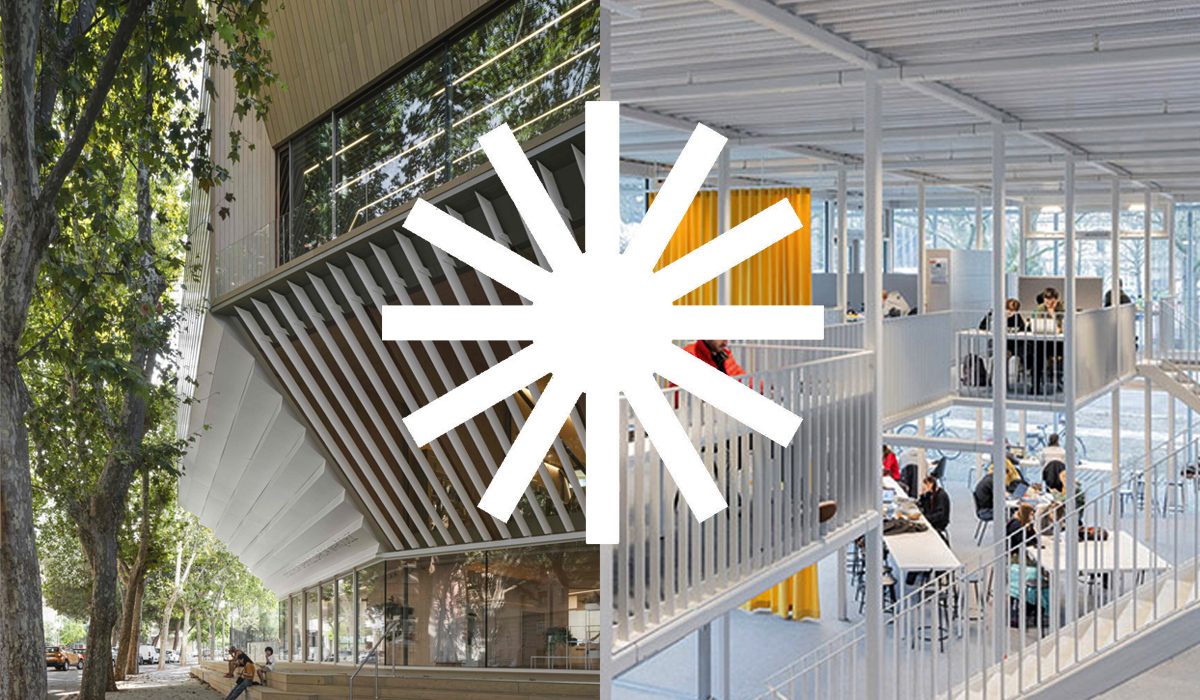Fundació Mies van der Rohe and the European Commission are proud to announce the Winners of the 2024 edition of the EU Prize for Contemporary Architecture / Mies van der Rohe Awards. After travelling around Europe visiting the finalist works and learning all about them, the jury has made its decision.
The two awarded projects have been chosen from an initial group of 362 nominated works for the 2024 EU Mies Awards.
ARCHITECTURE WINNER 2024
The 2024 Winner of the Architecture Prize is the Study Pavilion on the campus of the Technical University of Braunschweig, Germany, by architects Gustav Düsing and Max Hacke, both with studios in Berlin. The client is the Technische Universität Braunschweig.
The study pavilion on the TU Braunschweig campus is an innovative and highly flexible learning environment that promotes social exchange and interdisciplinary knowledge generation between students and teachers alike and represents a counter-model to spaces of hierarchical knowledge transfer.
"It is rewarded for its ability to challenge the constraints and imagery of sustainability, creating a welcoming and playful environment for study, collaboration and community gathering through an uncompromising and carefully detailed structure."
The two-story building provides student work spaces for all faculties. Situated on the central campus directly on a river, the pavilion forms a new landmark on the main axis along the Audimax, the historic main building and the Forum Square, thus integrating into the existing pathway of the campus. The compact volume with a square plan is an open space concept with an indeterminate groundfloor and a 1st floor consisting of a series of platforms and bridges that extend into the exterior. Decentralized access via 9 doors and 9 stairs zones the space, seamlessly blending circulation zones and usable spaces. The building is wrapped in a shaded floor-to-ceiling glass façade that provides views of the natural landscape and campus plaza.
The post-pendamic academic world is subject to constant change, and the study pavilion as a social space offers answers to the question of what role the university campus can play in the future, when lectures and presentations take place in digital space and AI challenges classical learning models. The building’s organizing principle follows the idea of a superstructure that allows for constant reconfiguration of the floor plan. This flexibility in the floor plan makes the building ephemeral and responsive, ensuring its relevance for a long time. To create a sense of community that transcends individual subjects, a space of equal value was created throughout, with no spatial separation between floors and equal access to daylight. Instead of fixed walls, zones were developed that are accessed by their own stairs and entrances, creating distinct areas that invite a variety of activities. From double-height clearings to intimate retreats and presentation spaces.
The slender steel-wood hybrid structure is fully demountable and follows the principle of “design for dissasambly”. The primary support structure, consisting of beams and columns, is modular and built on a square grid of 3 x 3 m, consisting of the same square hollow section of 10 x 10 cm. The wooden ribbed decks inserted in the beam frames are not mechanically connected, and the facade is not glued, so it can be dismantled. In addition to possible densification by means of further platforms, the building could also be rebuilt in a different form or at a different location, and is in line with the principle of the “future material depot”, in which not only building materials can be reused, but entire architectural elements such as facade panels, stairs and platforms find a new use in the sense of “circular construction”.
EMERGING ARCHITECTURE WINNER 2024
The 2024 Winner of the Emerging Architecture Prize is the Gabriel García Márquez Library in Barcelona by SUMA Arquitectura founded by Elena Orteand Guillermo Sevillano in Madrid. The client is the Barcelona City Council–BIMSA.
The García Márquez is a pioneering and landmark library that culminates a three-decade plan building these facilities in Barcelona. It serves a working class and advocating neighborhood, lacking significant investment for years, that demanded its “people’s palace” ever since and now enjoys the “best new library in the world”, according to IFLA.
The library’s sculpted form evokes blocks of stacked books with folded pages. It sits on an elevated plaza that allows fluid pedestrian circulation around and cantilevers over the open area, creating an urban lounge that extends the pedestrian and cultural axis of the neighborhood, enclosed by the big existing trees. The library offers a reinterpretation of the characteristic chamfer of Barcelona’s Eixample to a street cross that is now Plaça Carmen Balcells. The 45º geometry of the chamfer is also that of the north-south axis and crosses the entire library, with triangular courtyard and cores, and an envelope that seeks indirect light in its facades and skylights, avoids frontal views of the police station and looks at the street trees. The facility has 4,294 m2 distributed over 5 floors around three vertical cores and a central triangular atrium with zenithal lighting.
"This wooden structure unfolds as a rich sequence of monumental and domestic spaces that welcome neighbours and citizens, providing them with comfortable atmospheres for learning, teamwork, and community engagement."
The site is a small rectangular plot at a cross of two secondary streets, behind a police station. The limited footprint multiplies the number of floors, without exceeding the tree canopy, and the elevated ground floor allows for light and independence of uses on the lower floor through the rear garden. The building sits on three cores around a triangular courtyard, connected by different timber trusses, which house the most independent spaces and free up open-plan areas. The geometry and position of the cores activate circulation in and around the atrium, multiplying the views and itineraries through the library and turning the void into a centripetal and connective space with a spiral staircase. The project was accompanied by a programmatic research to redefine the contemporary library model. For its collection of ECOSYSTEMS, formal and informal situations, local and global, were analyzed and then combined and designed holistically to foster the experience of accessing, exchanging and producing knowledge. From the Agora-Showcase to the Forum of Ideas or the Palace of Reading, the library is a landscape, a Spiral of Encounters, where anyone can find his or her place.
The library features numerous energy-efficient and sustainable strategies, passive and active, accredited with a LEED Gold certification, such as: the atrium that performs as a solar chimney; a lightweight, ventilated fiberglass envelope with resins that optimizes solar protection and natural lighting; industrialized and prefabricated construction systems; low emission materials and greenhouse gas storage from structural wood; photovoltaic panels; recycled rainwater, etc… The timber structure not only solves the load-bearing requirements, but also qualifies the spaces, orients them, and organizes visuals and circulations, defines their scale and character, and is designed holistically together with the rest of the architectural and programmatic elements to form a coherent ecosystem. The structural ensemble is fundamentally resolved with exposed laminated and cross-laminated timber (the largest exposed volume in Europe to date of construction), combined with singular and reinforcing steel elements, and joinery and assembly proper of cabinetmakers. The result combines warmth, lightness and visual permeability.
The EU mies Awards Day including the Awards Ceremony, will take place on 14 May 2024, at the Mies van der Rohe Pavilion and Palau Victòria Eugènia in Barcelona, launching the Barcelona Architecture Weeks.
The EU mies Awards Day, open to the public, will include:
- the “EUmies Awards Talks” with Winners, Finalists, Shortlisted, clients, architecture media and people interested in discussing on the emerging topics highlighted by the jury, in the Palau Victòria Eugènia;
- -the “EUmies Awards 2024 exhibition” (14 May-16 June) with models, texts, videos, sketches and drawings of the 40 shortlisted works and a summary of all 362 nominees, inthe Palau Victòria Eugènia;
- -the Awards Ceremony at the Mies van der Rohe Pavilion;
- -the Out & About programme, aimed at discovering architecture with the authors and promoters of the 40 shortlisted works who have been invited to organise events in their buildings and share their experiences with everybody. This programme is organised together with Guiding Architects.
After Barcelona, the ‘EUmies Awards 2024’ exhibition will embark on its tour around Europe with an opening in Madrid at the Casa de la Arquitecturai n July; and at the Architekturzentrum Wien in Vienna in October.
The EUmies Awards are organised by the Fundació Mies van der Rohe with the support of the Creative Europe programme of the European Union. This year we celebrate 10 years of the Creative Europe programme.


